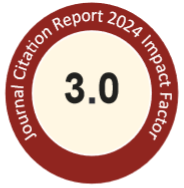Abstract
p-Aminobenzoates (PABA) and benzophenones in cosmetic products absorb UV radiation. We have developed two simple methods to simultaneously determine whether cosmetic products contain any of eight sunscreen compounds. The first method used high-performance liquid chromatography (HPLC) and a Cosmosil 5C18-MS column with an isocratic system consisting of acetonitrile-H2O solution (60/40, v/v) acidified by 0.1% phosphoric acid (v/v); the analysis was monitored by absorbance at 254 nm with a constant flow-rate 0.8 mL/min. This method could easily determine the presence of these compounds in non-pretreated sunscreen products in 30 min. The second method employed capillary electrophoresis (CE) in buffer solution (pH 10.0) containing 20 mM borate; the same analysis was made within 10 min. Reproducibility (relative standard deviation) of the proposed methods, on the basis of the peak-area ratios in six replicate injections, was good with only a slight deviation of 0.31 - 0.75% (for HPLC system) and 1.65 - 3.55% (for CE system). The detection limit (S/N = 3) of the individual marker substances varied from 0.08 to 0.87 μg/mL (for HPLC system) and 0.23 to 1.86 μg/mL (for CE system). Although the HPLC method was superior to the CE method in both reproducibility and resolution, it required longer retention time. The HPLC and CE methods developed were both successfully applied to the assay of 8 UV-absorbing agents in 11 commercial sun protection products.
Recommended Citation
Juang, L.-J.; Wang, B.-S.; Tai, H.-M.; Hung, W.-J.; and Huang, M.-H.
(2008)
"Simultaneous identification of eight sunscreen compounds in cosmetic products using high-performance liquid chromatography and capillary electrophoresis,"
Journal of Food and Drug Analysis: Vol. 16
:
Iss.
6
, Article 10.
Available at: https://doi.org/10.38212/2224-6614.2319

